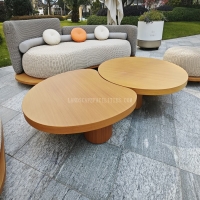Welcome to the website for landscape facilities products and knowledge.
What are the most effective ways to ensure equitable access to landscape tables in public spaces?
Equitable access to landscape tables in public spaces is essential for fostering inclusivity and ensuring that everyone, regardless of ability or background, can enjoy communal areas. Here are the most effective ways to achieve this goal:
1. Universal Design Principles: Incorporate tables that accommodate diverse needs, such as adjustable heights, wheelchair-accessible spaces, and tactile surfaces for visually impaired individuals.
2. Strategic Placement: Position tables in easily reachable locations, avoiding steep slopes or uneven terrain, and ensure they are near pathways and amenities like restrooms and water fountains.
3. Community Engagement: Involve local residents, including people with disabilities, in the planning process to identify specific needs and preferences for table design and placement.
4. Maintenance and Upkeep: Regularly inspect and repair tables to ensure they remain functional and safe for all users, addressing issues like rust, splinters, or unstable surfaces promptly.
5. Clear Signage and Wayfinding: Install visible signs and maps to guide users to accessible tables, using symbols and braille where necessary.
By implementing these strategies, public spaces can become more welcoming and usable for everyone, reinforcing the importance of equitable access in urban design.
Related search:

Recommendation
Elliptical metal outdoor table with nested design, resembling wood grain, round table